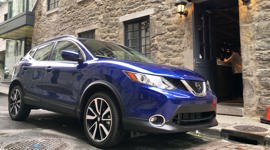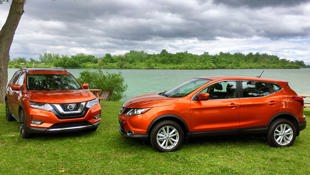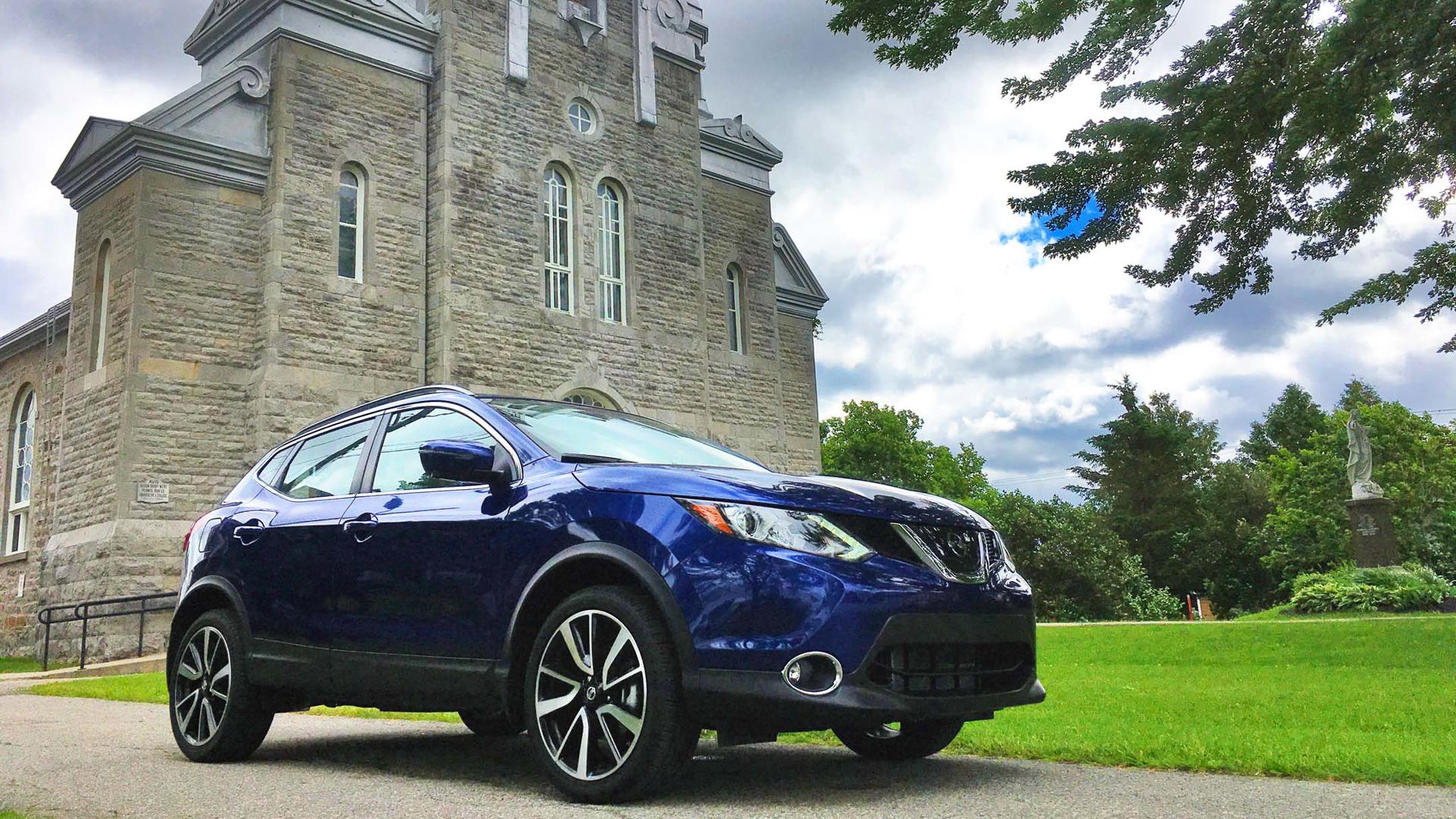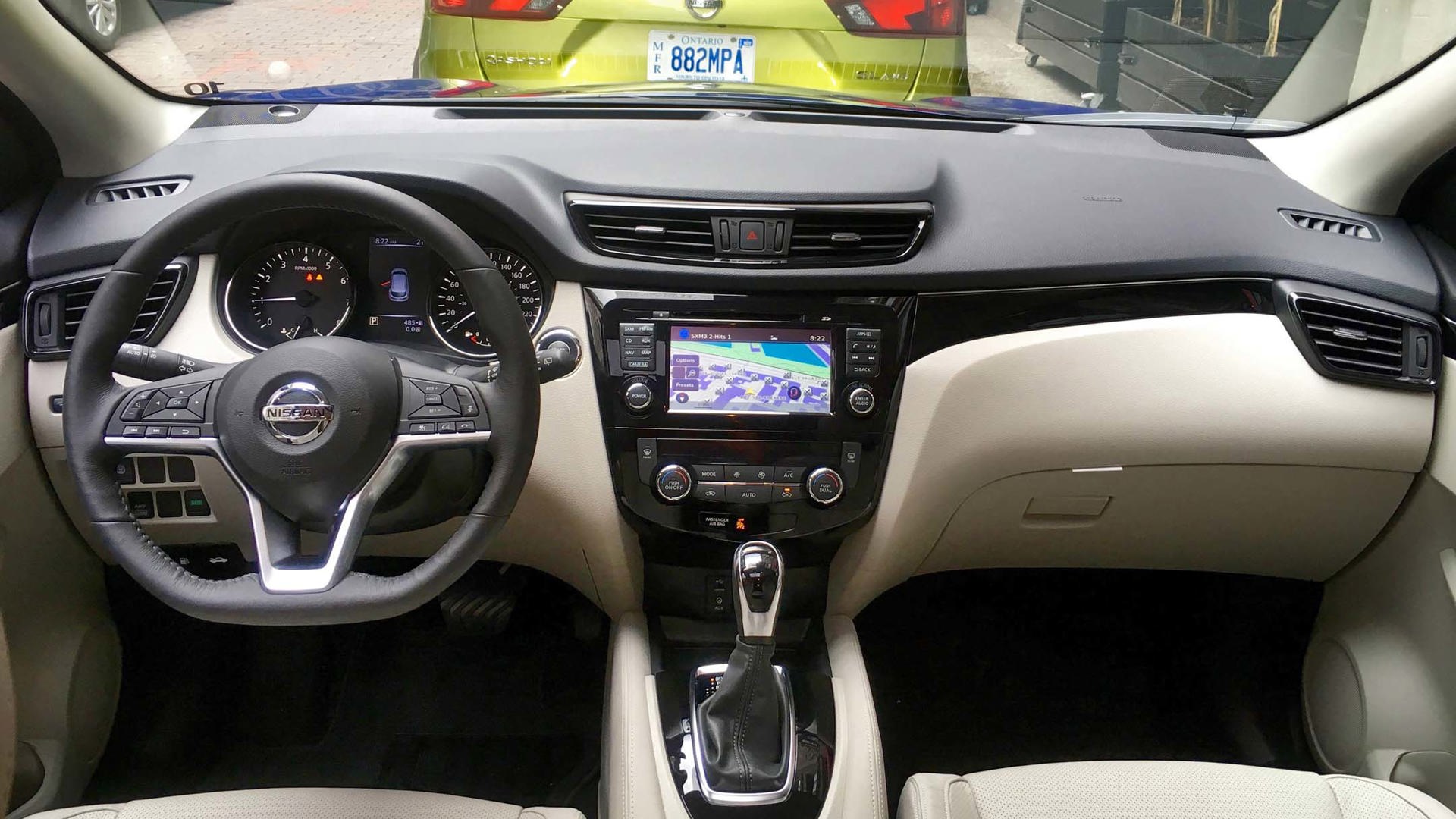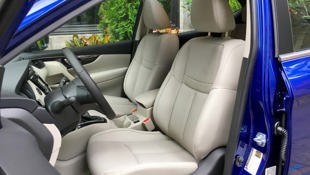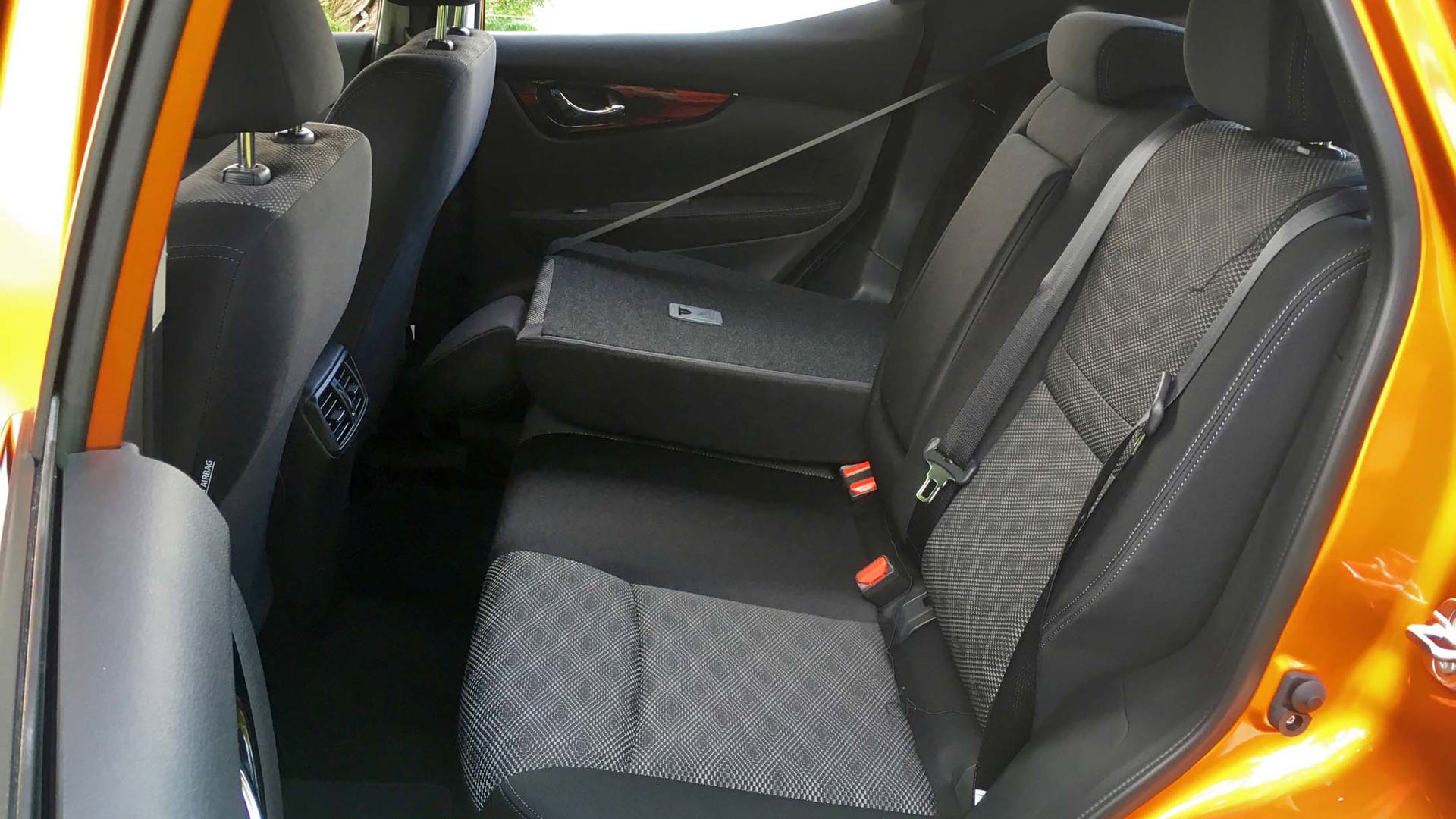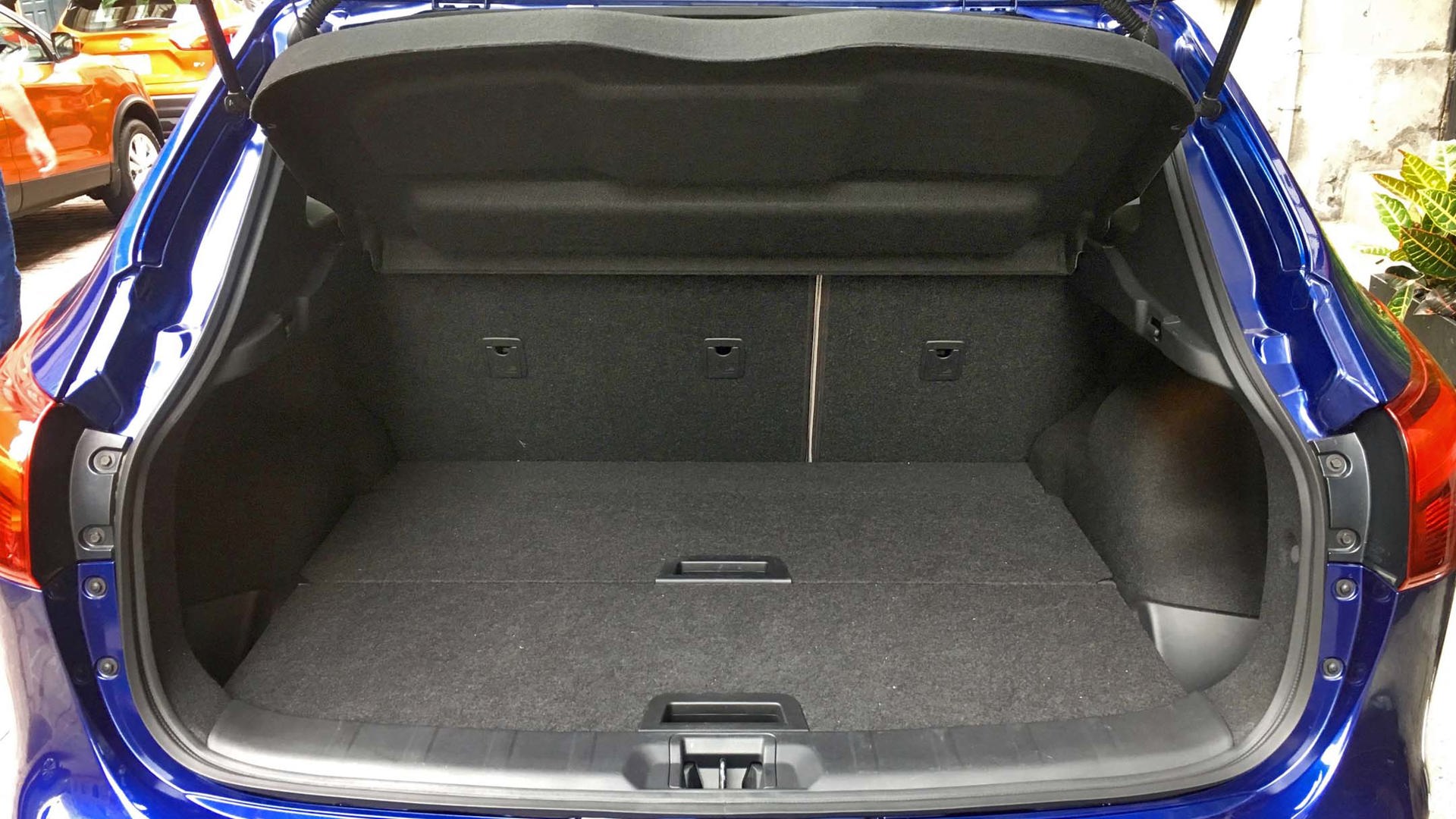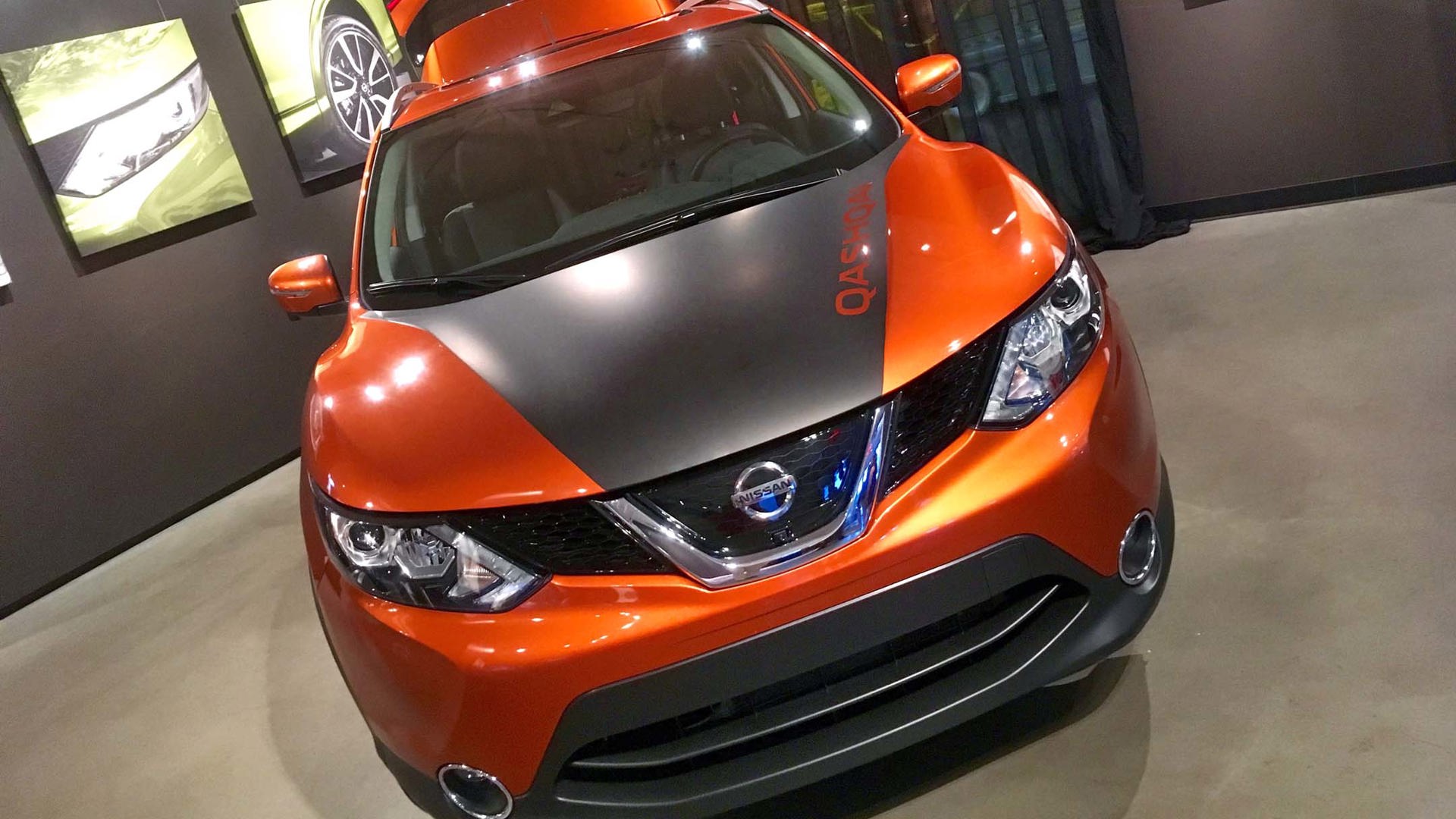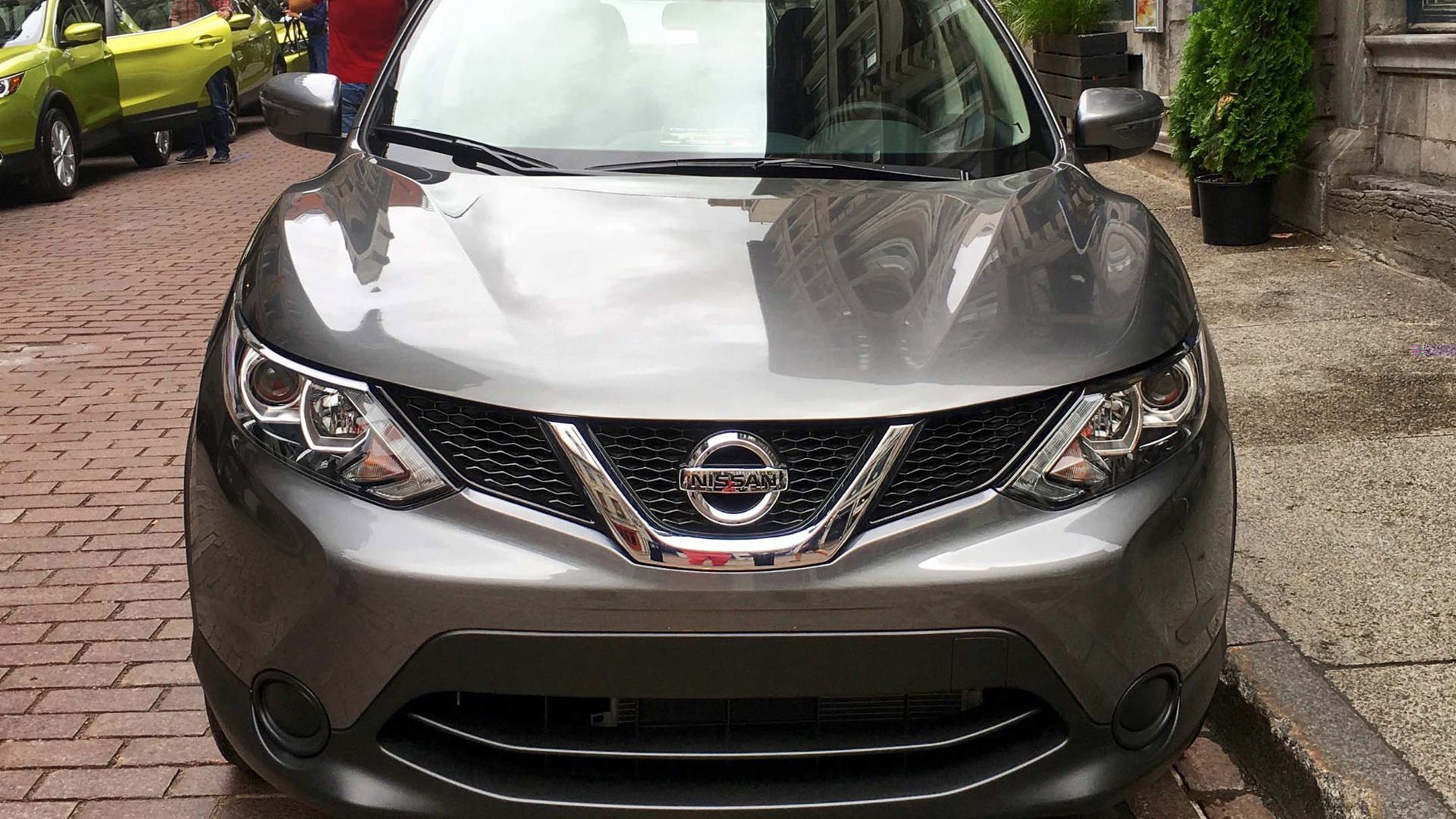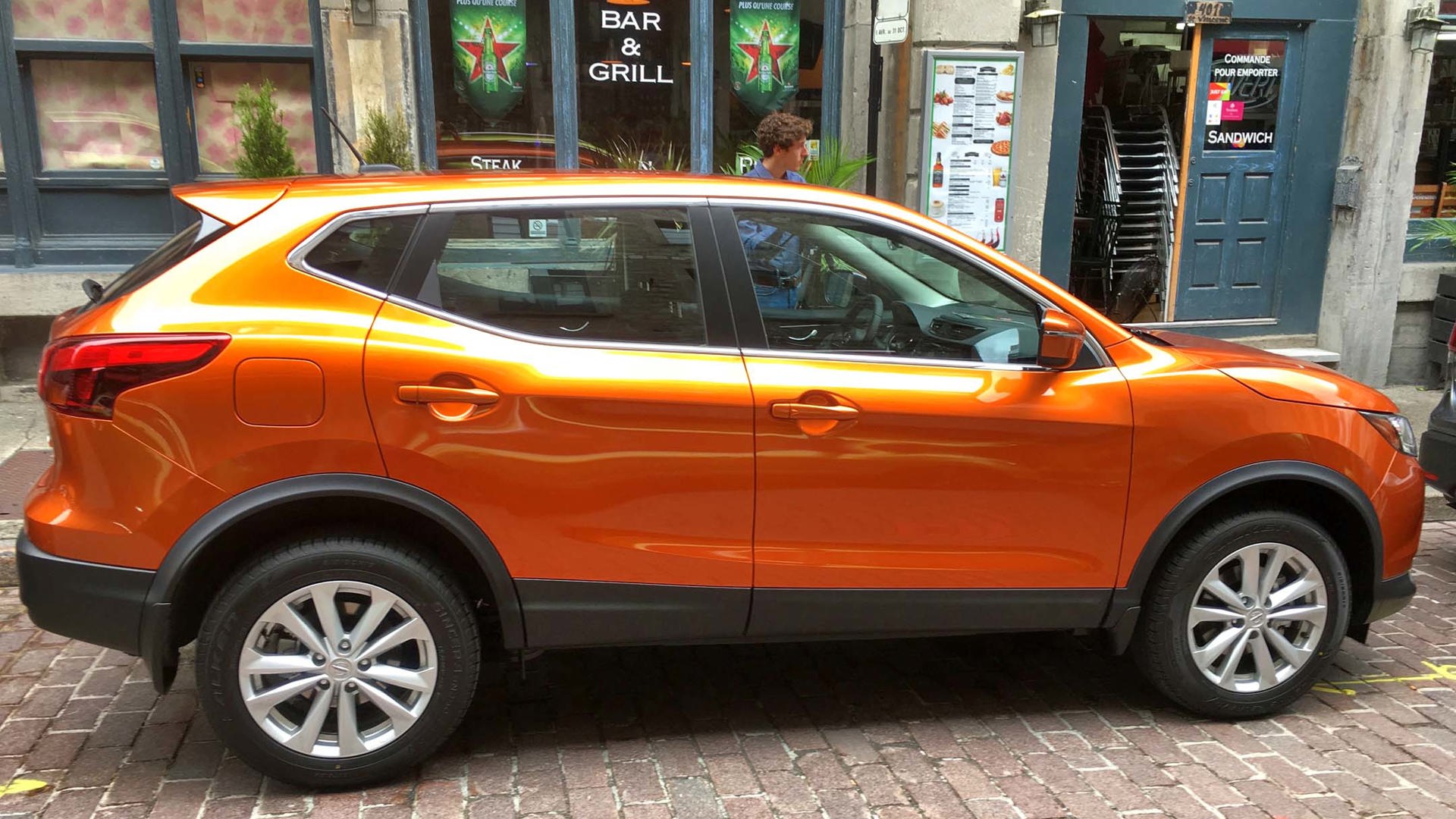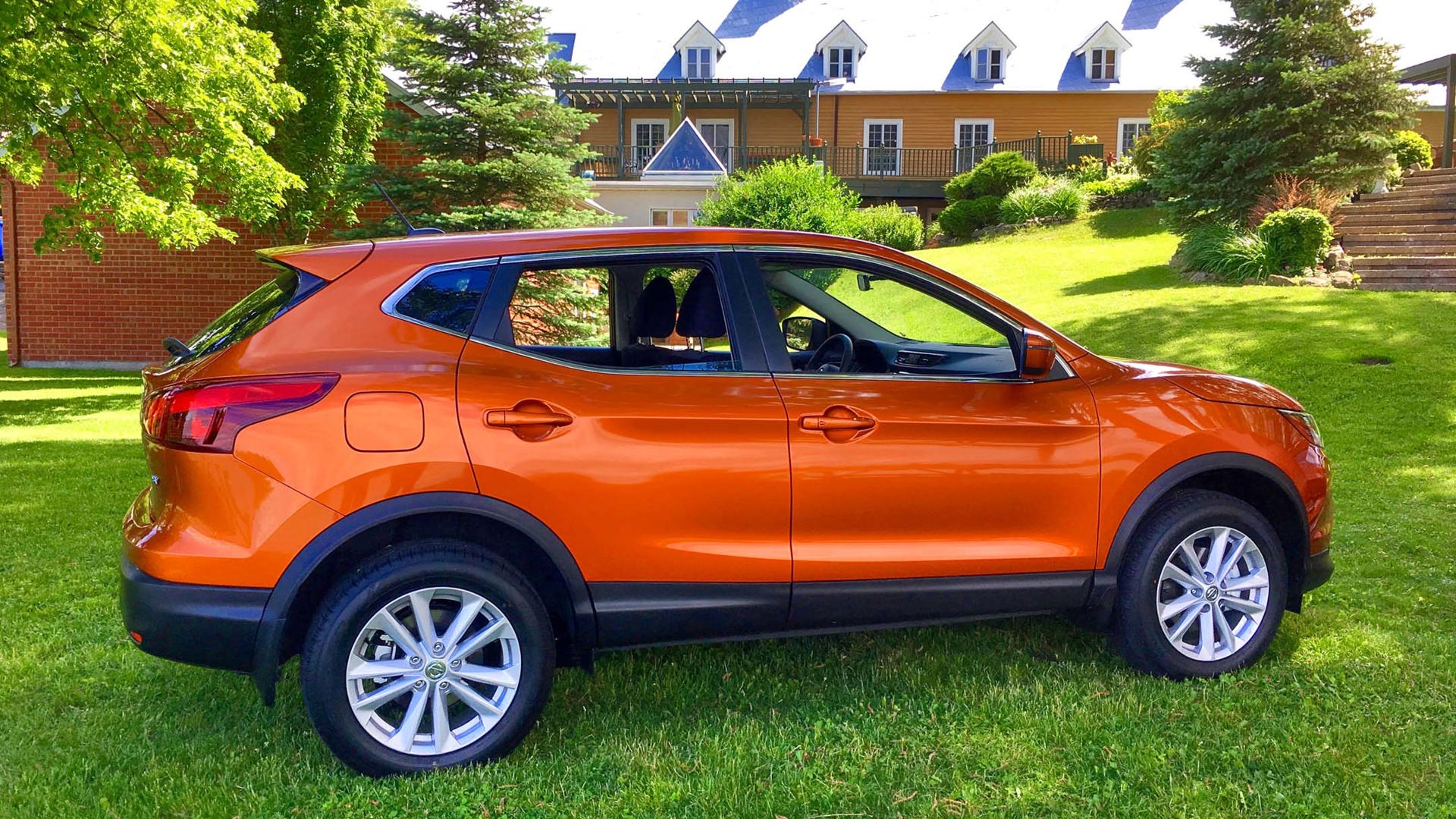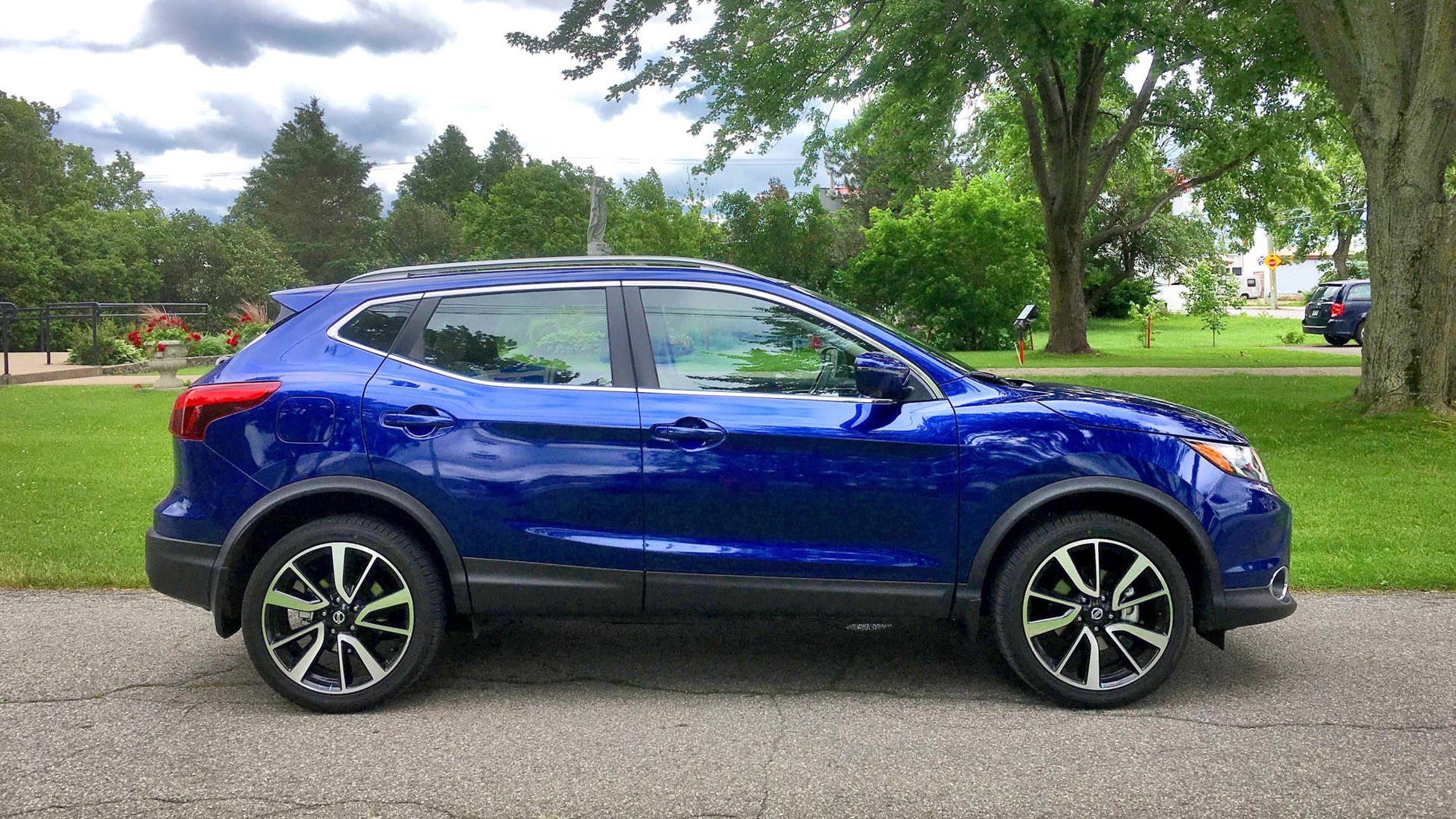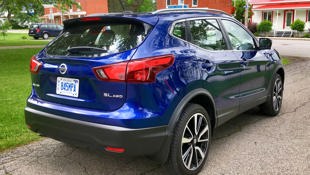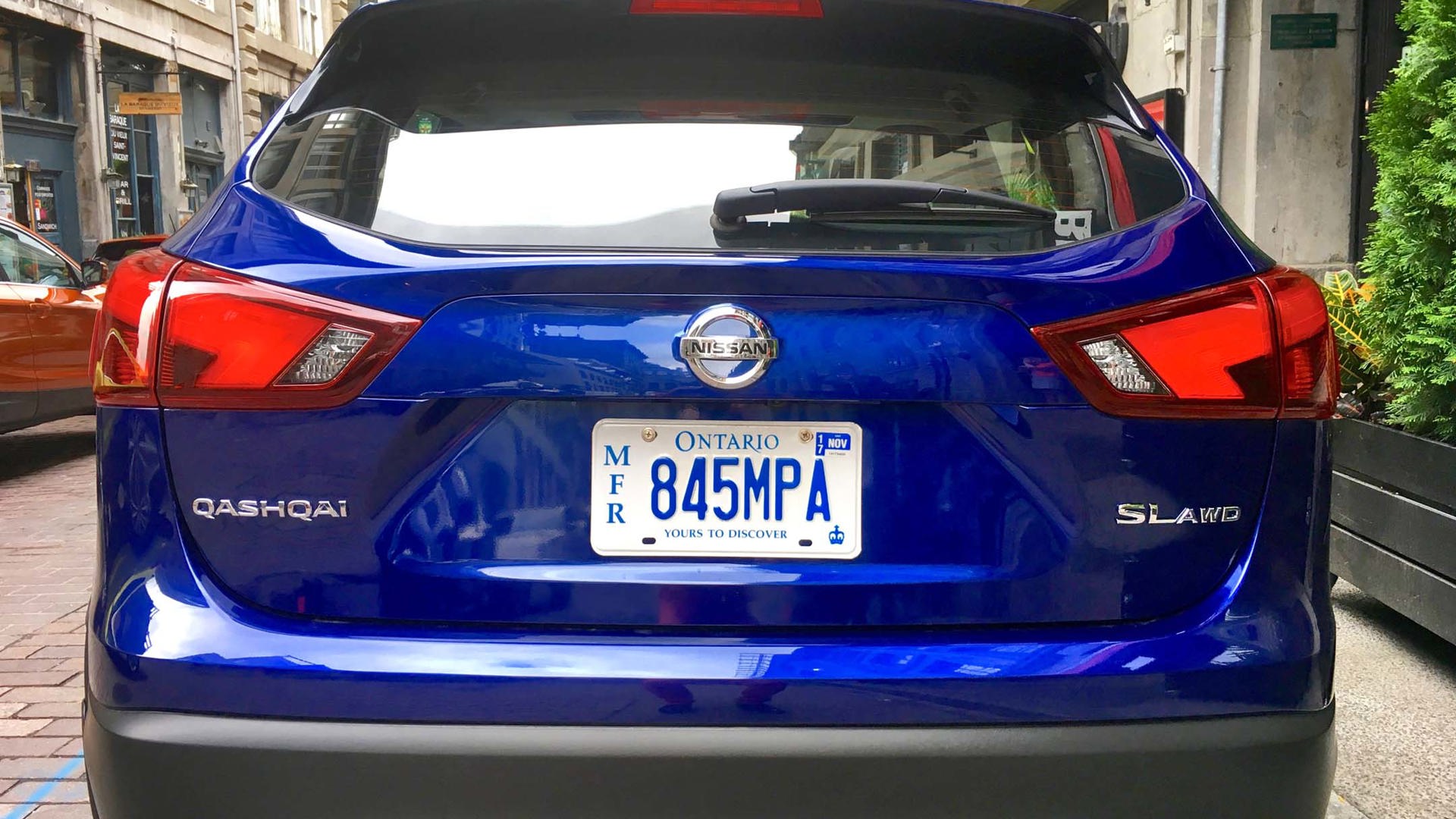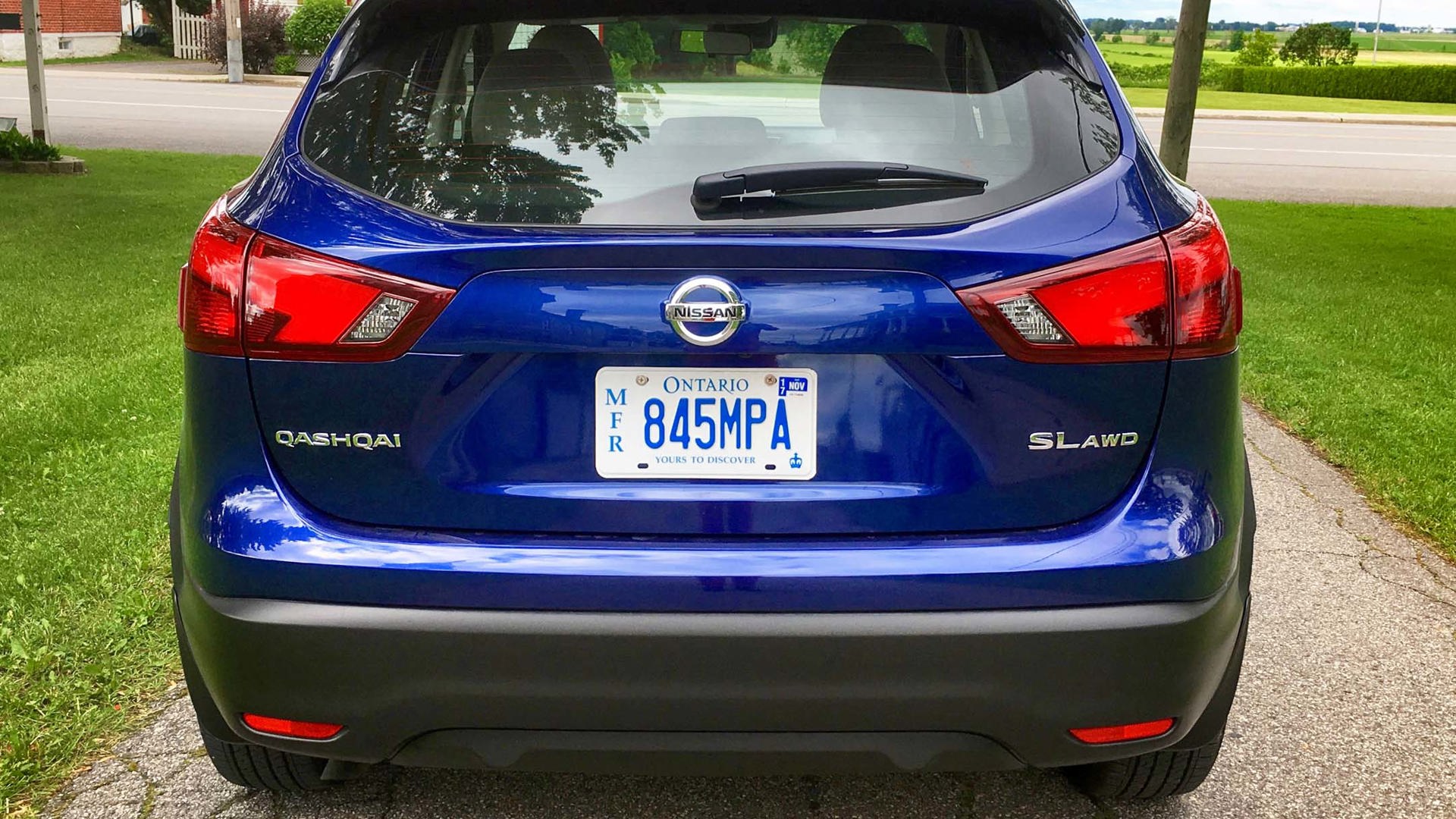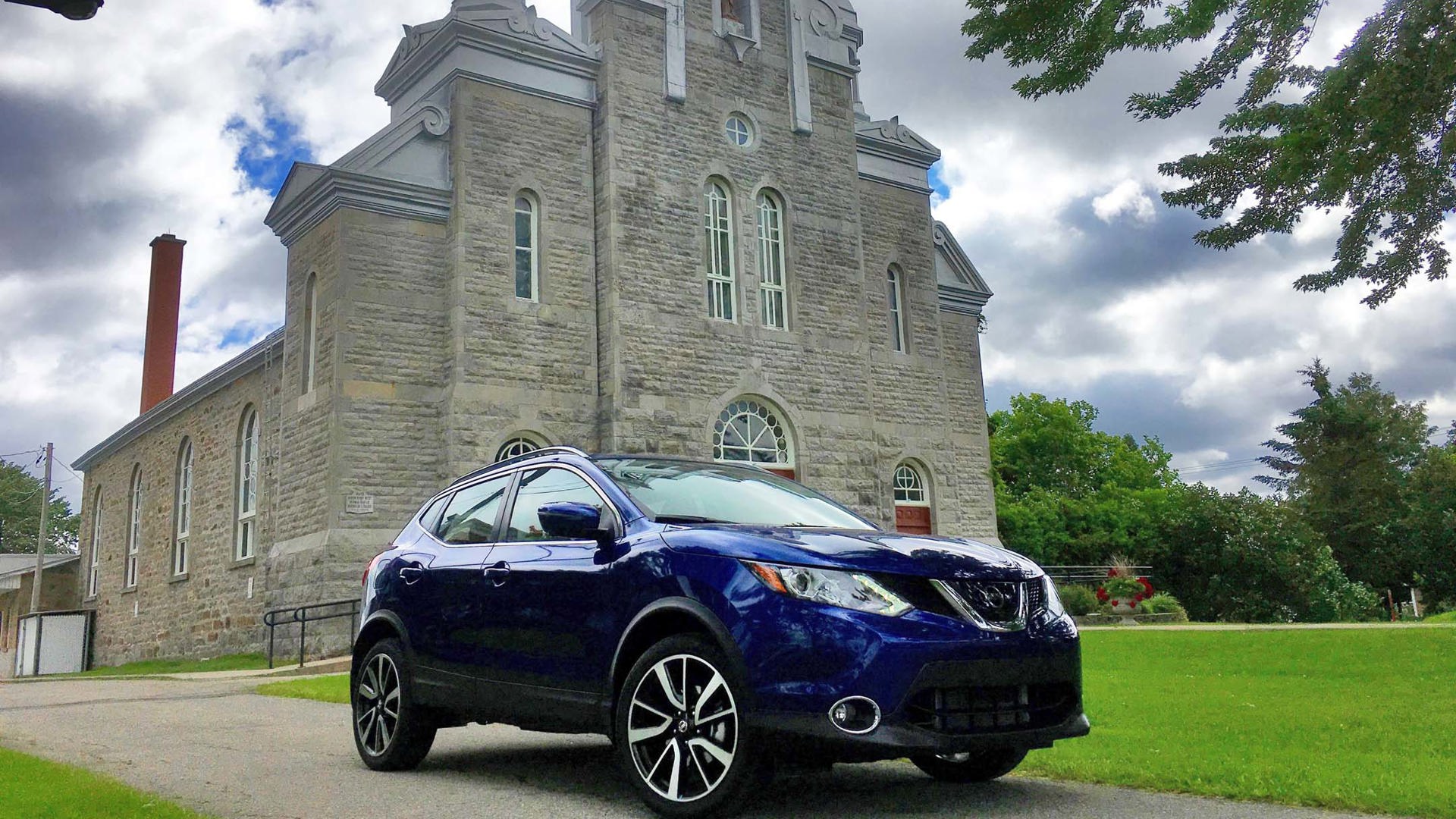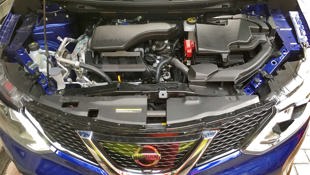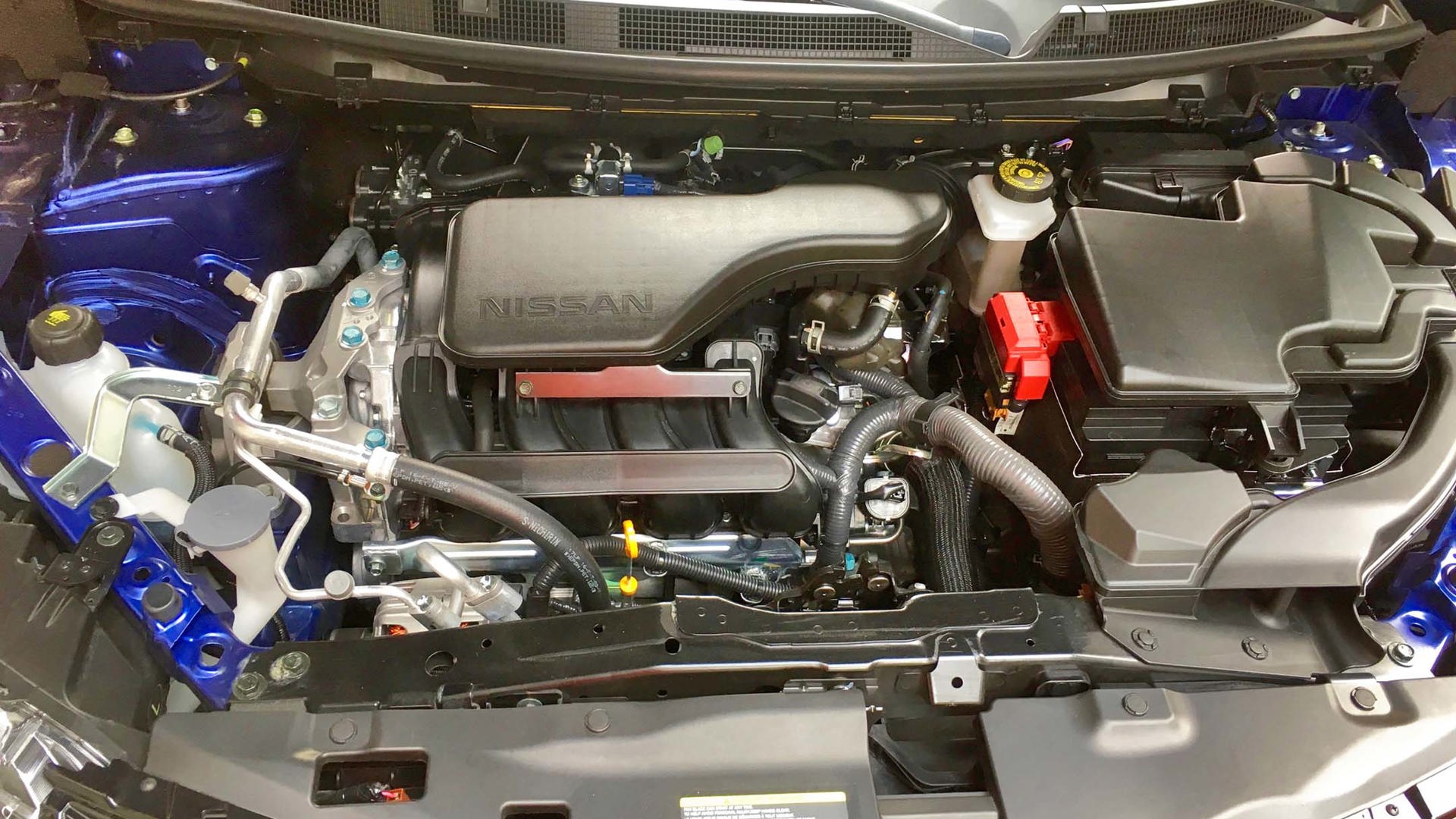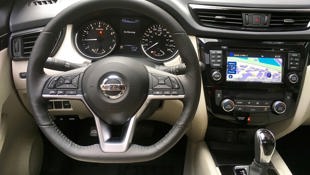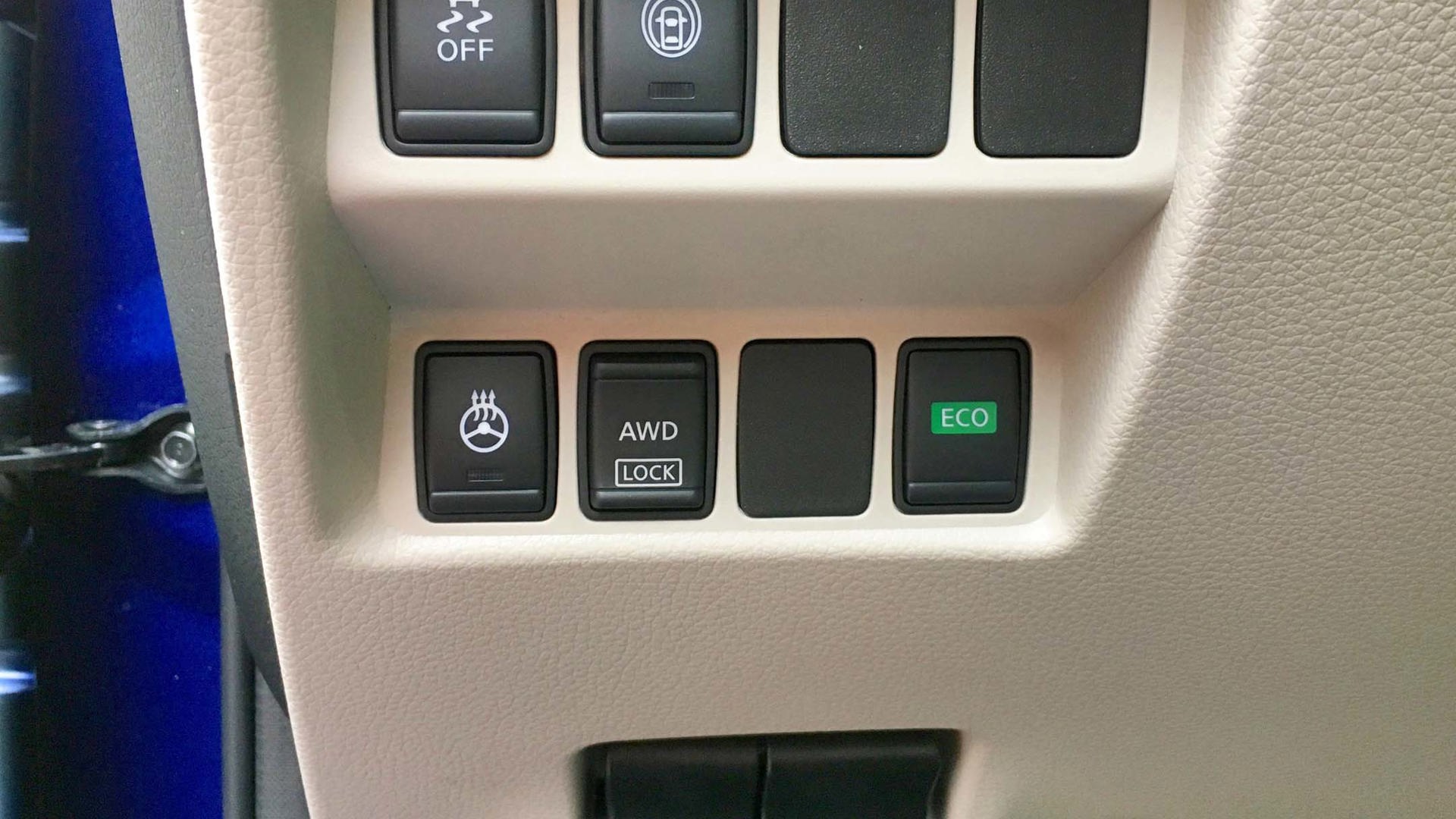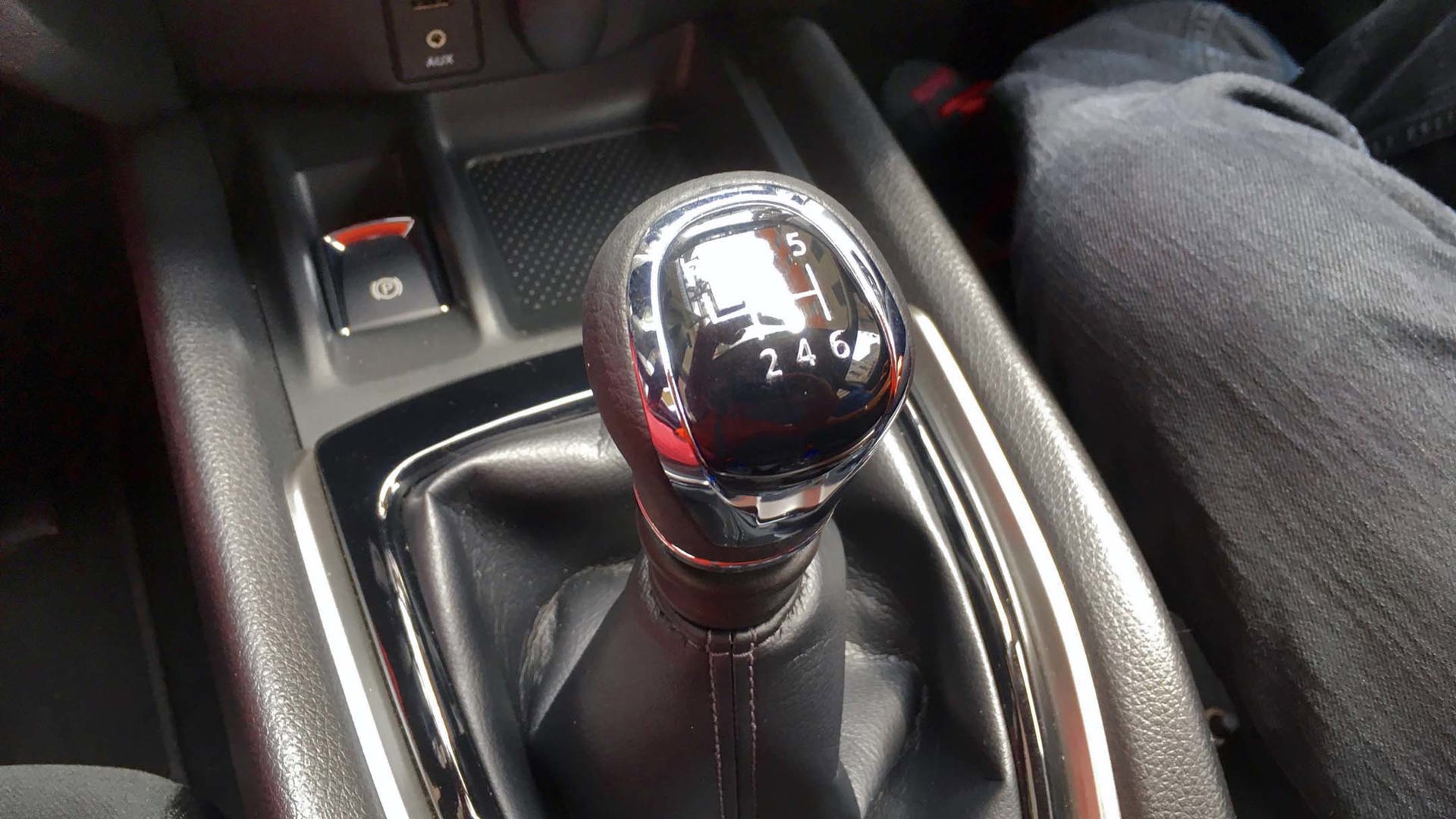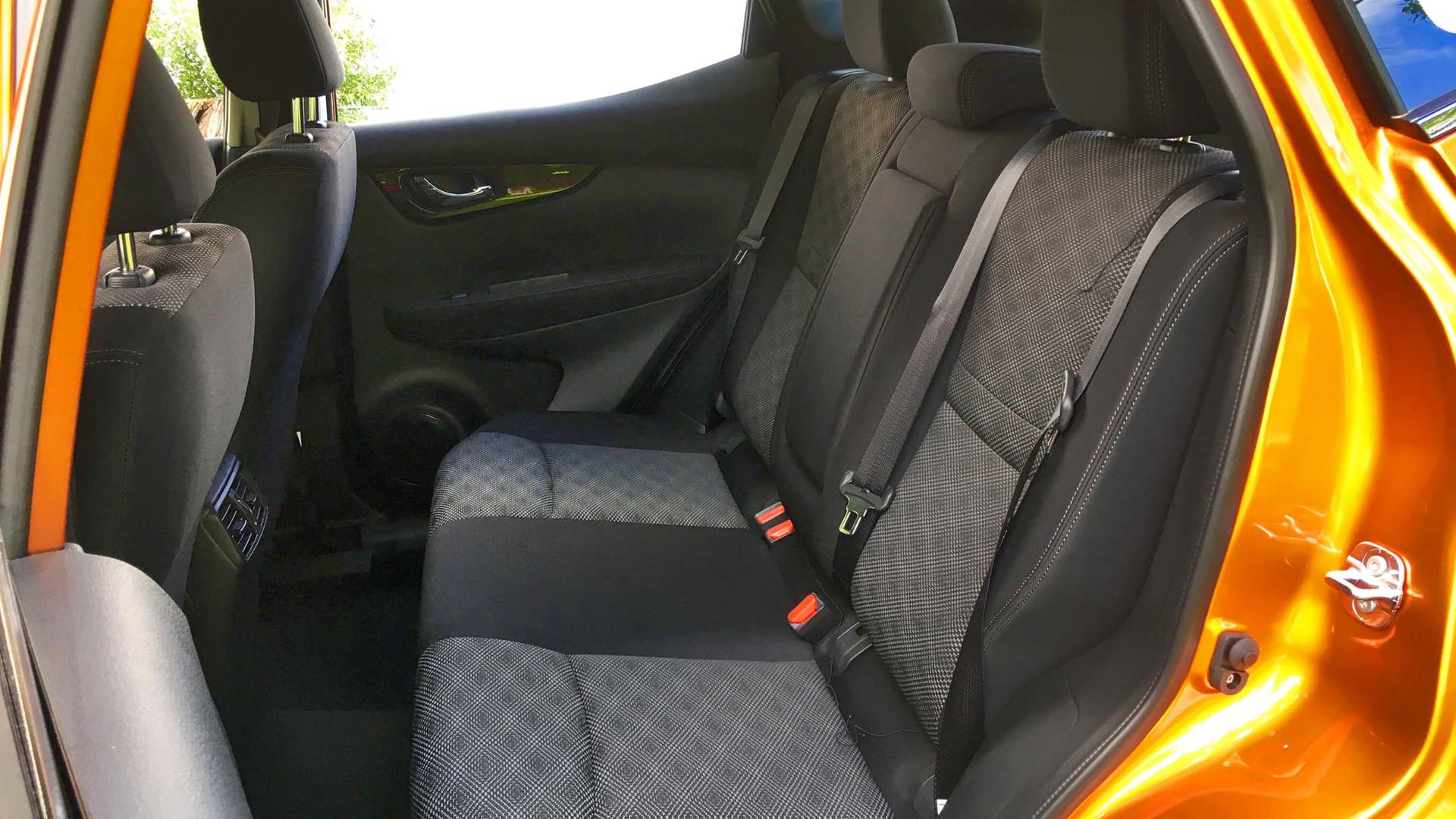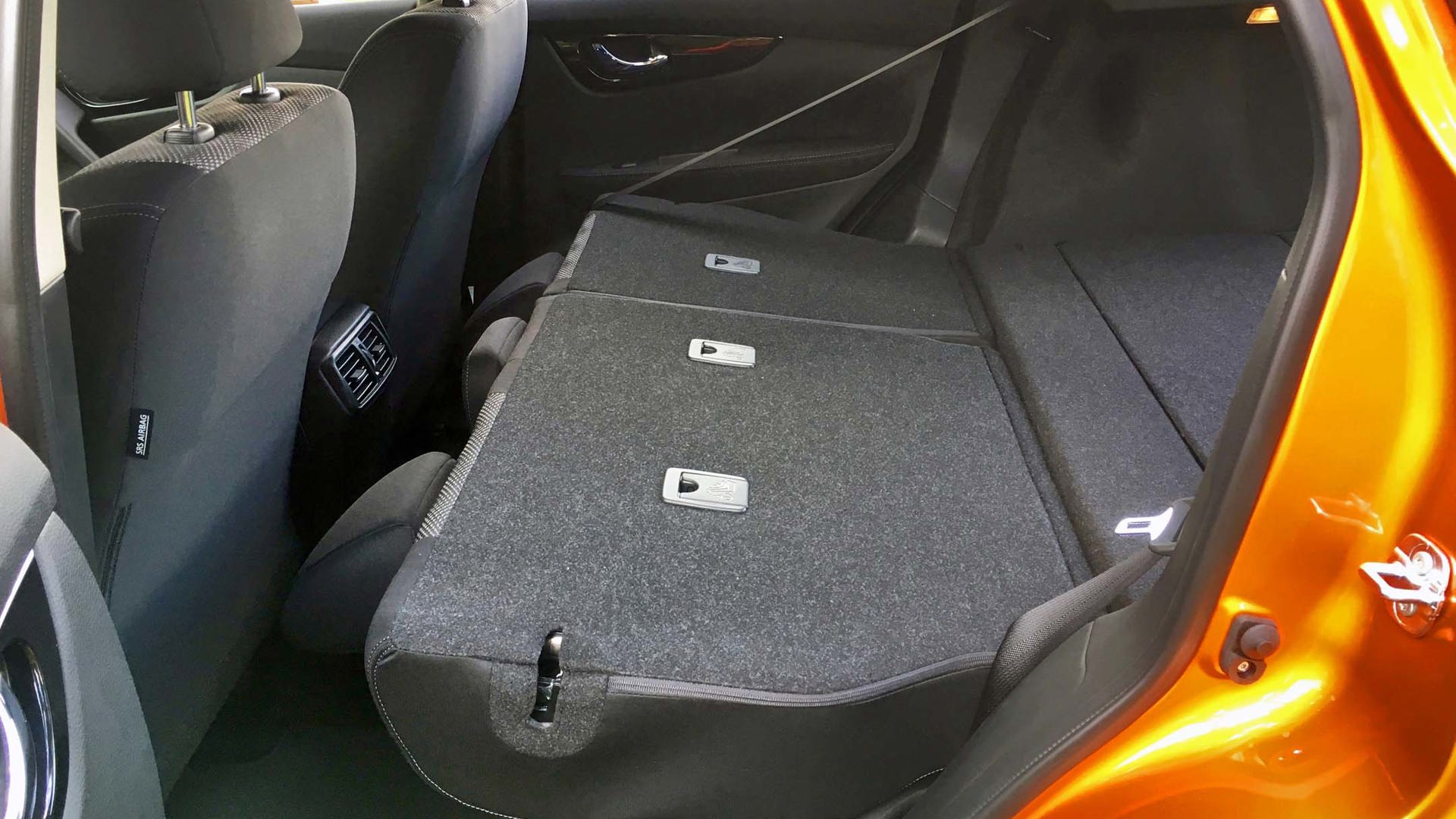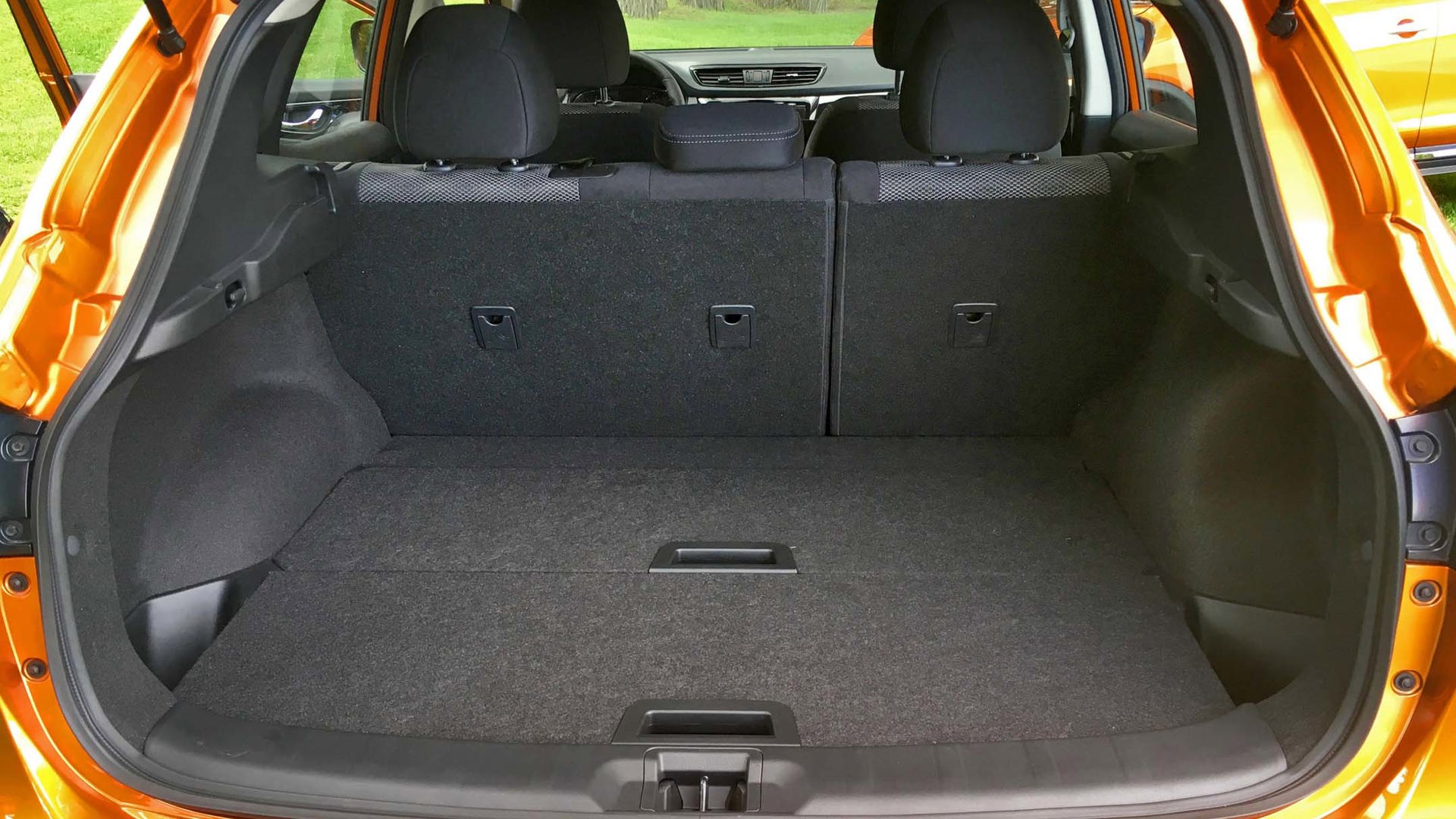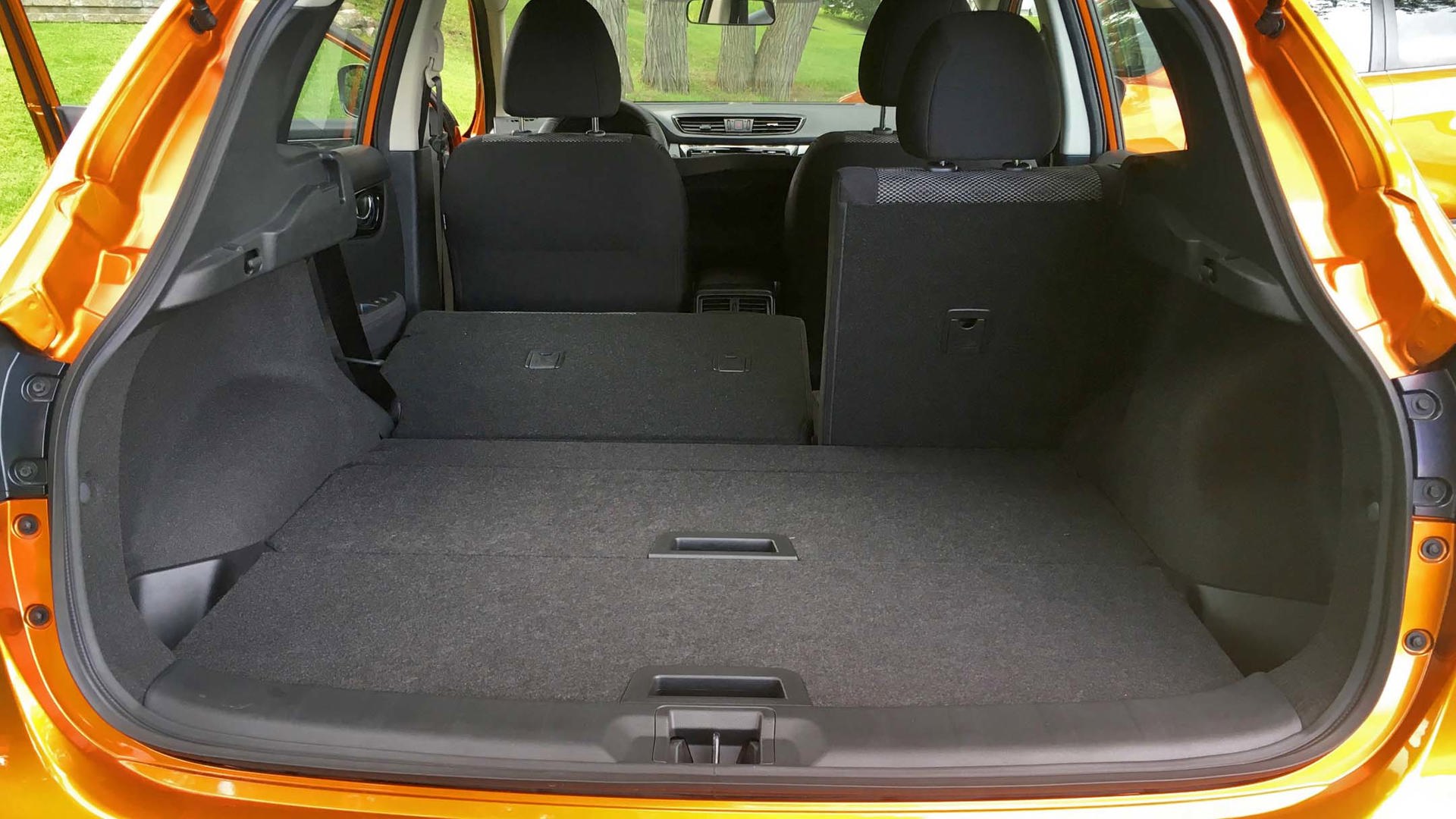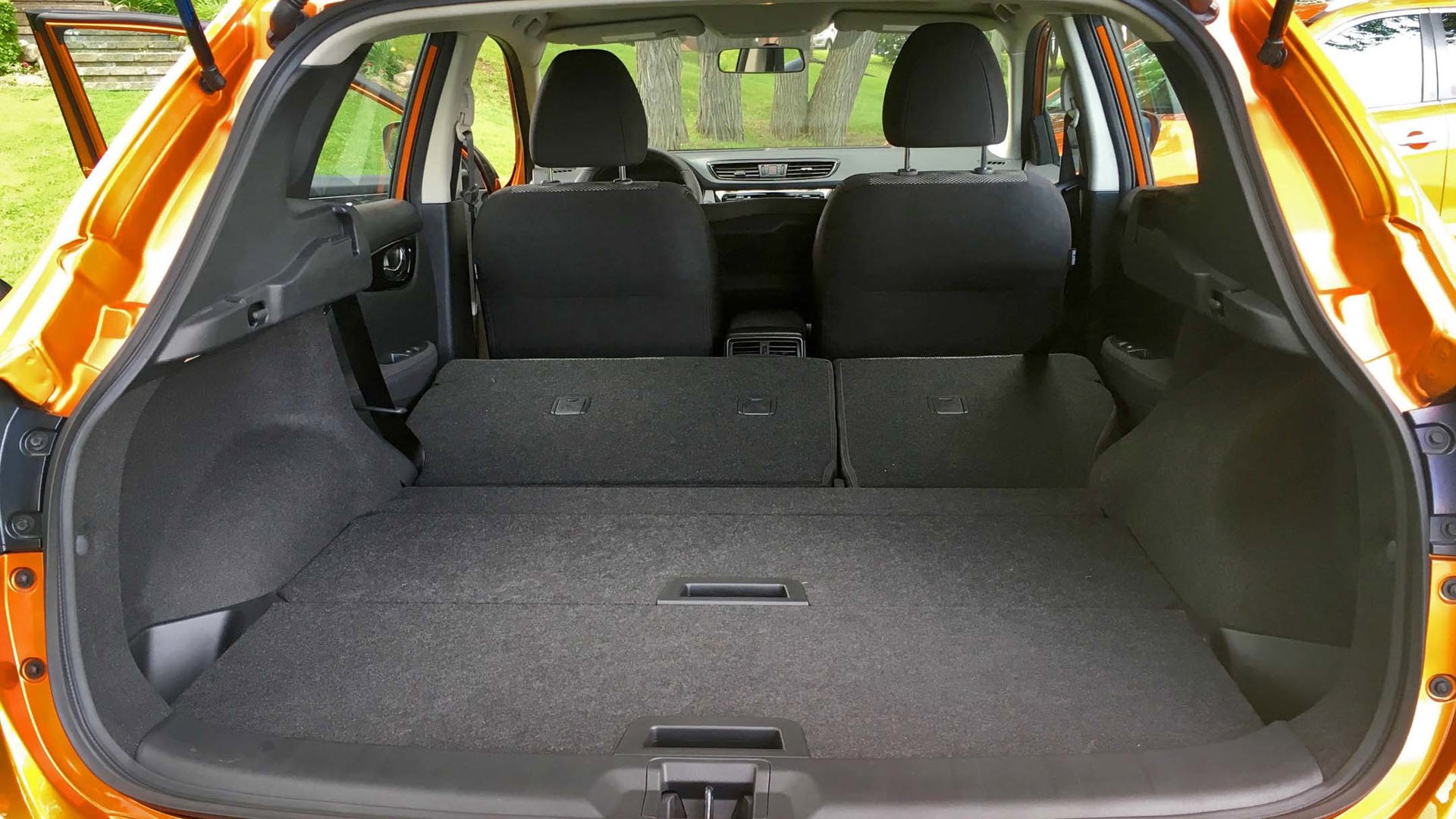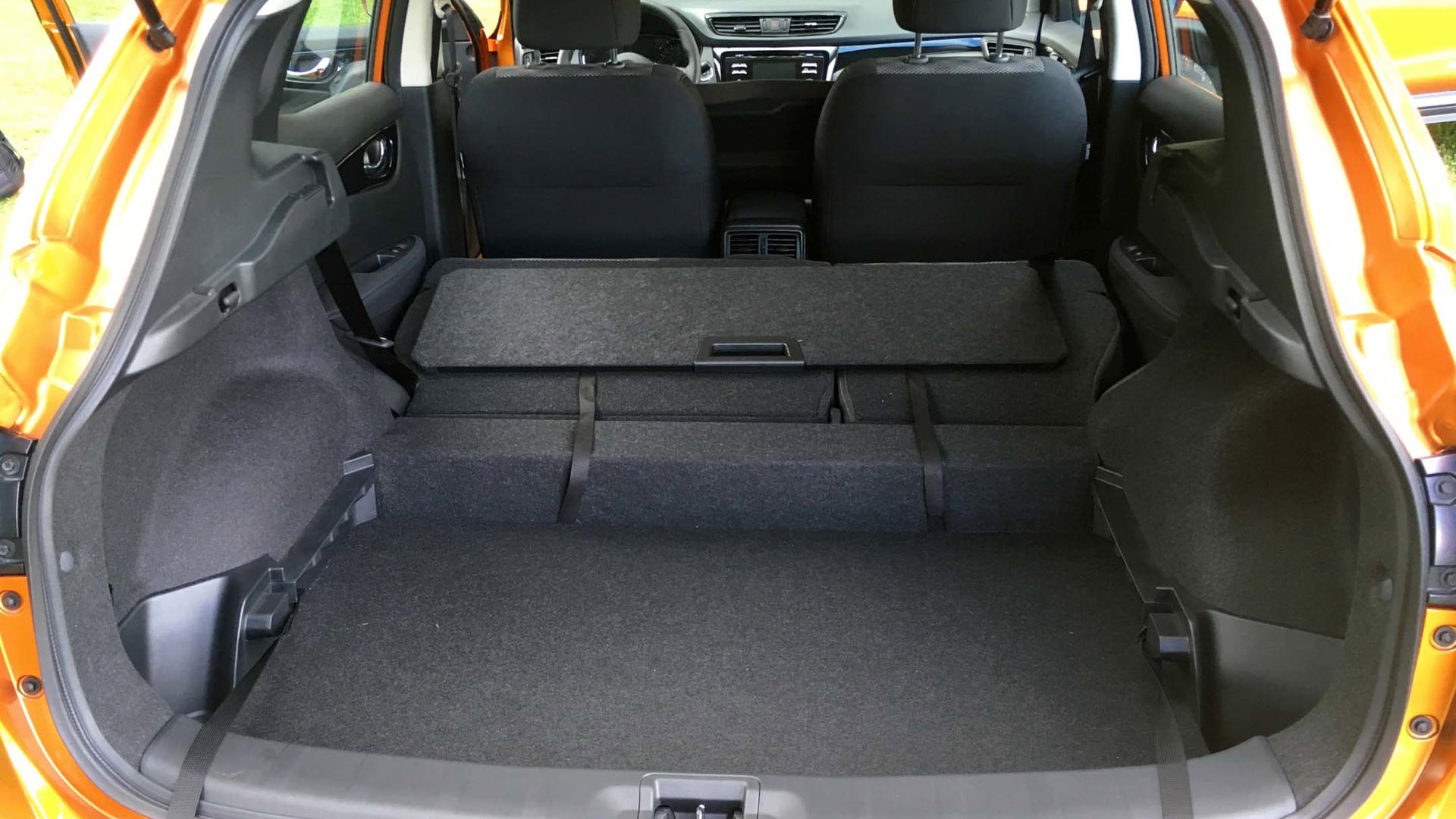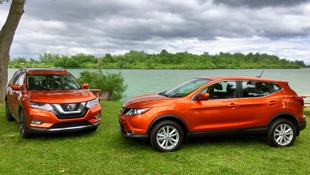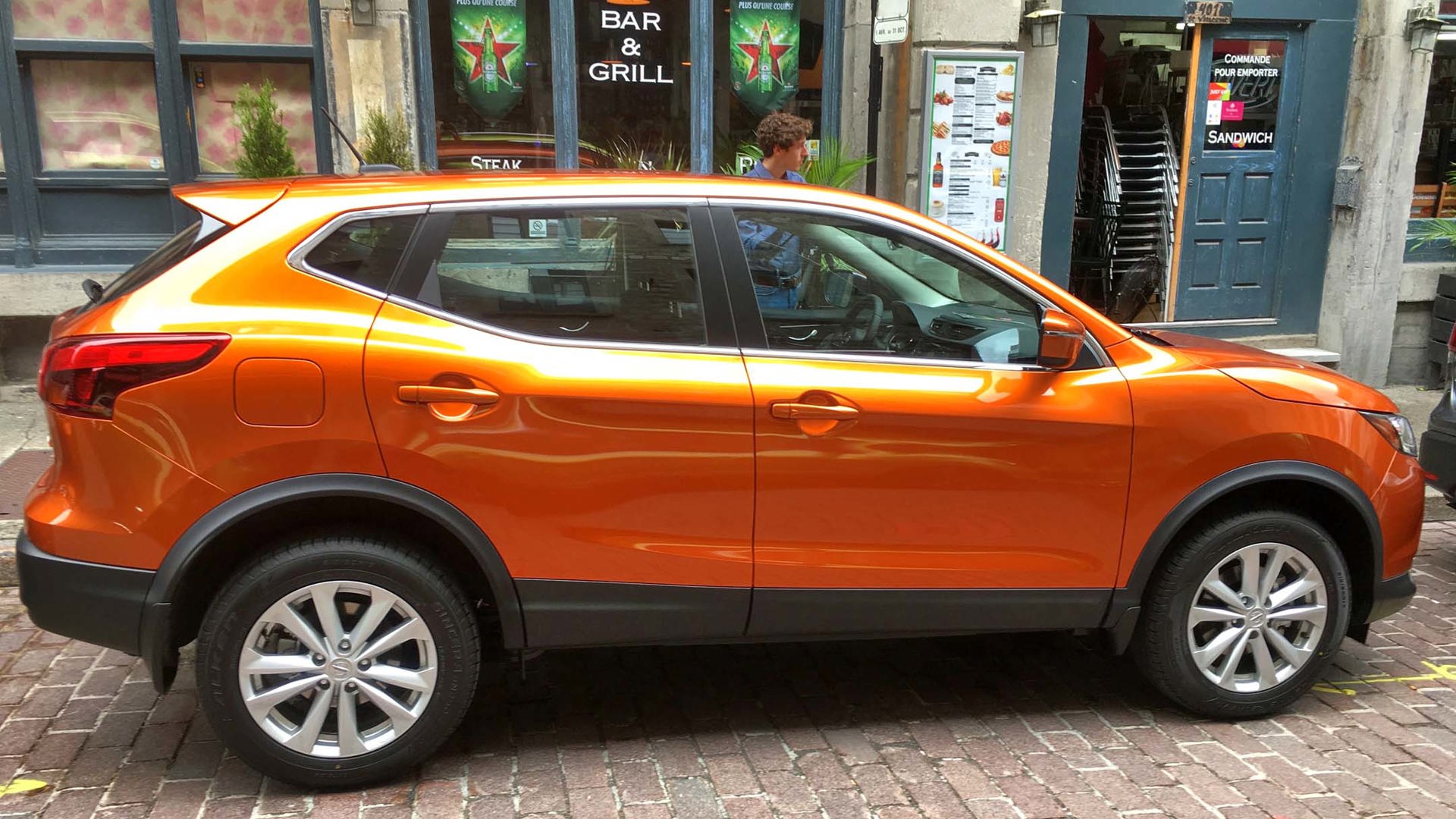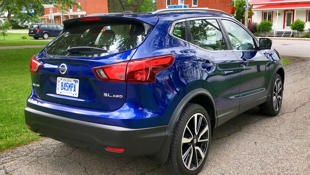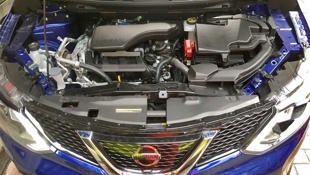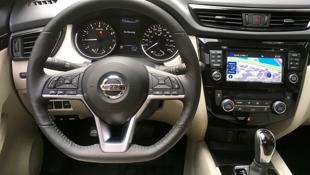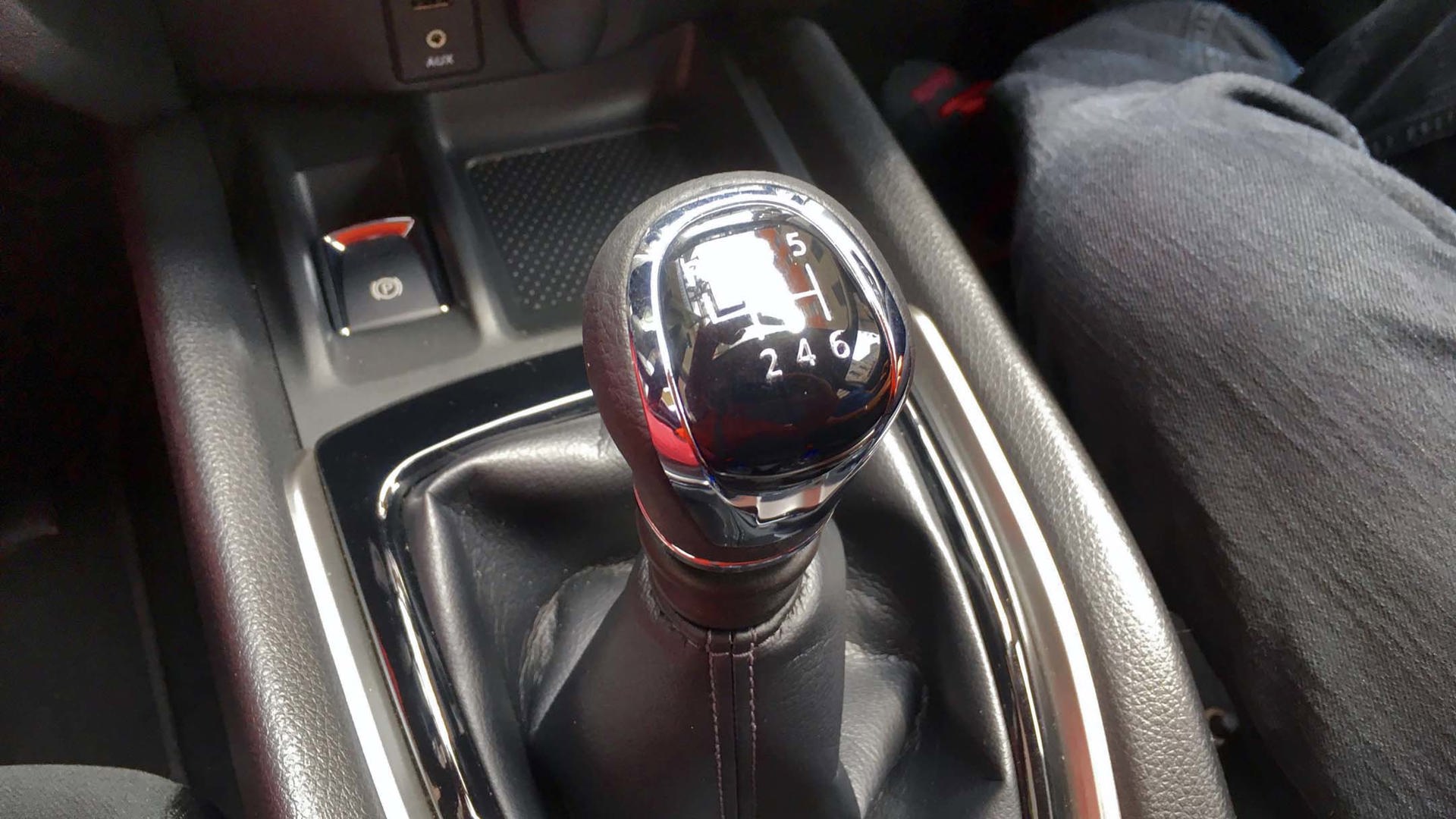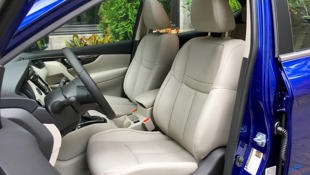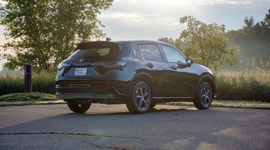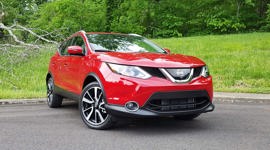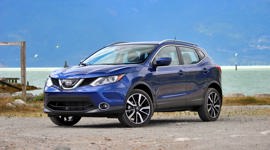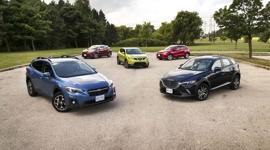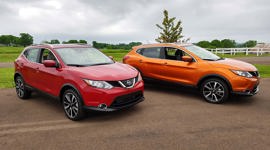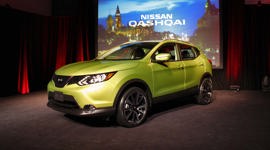Forget what you’ve read about corporate American nomenclature, the new Nissan Qashqai is not a Rogue Lite™. So what is a Qashqai? Bit of a story there.
Imagine the freedom of having all your essentials with you at all times and enjoying a life on the move.
During a brief presentation on June 20, Brent Smith, Nissan Canada’s Chief Marketing Manager of the Crossovers division said that Canadians, especially Quebeckers, are more like Europeans than Americans. Moreover, he said that many of us have seen and taken note of the Qashqai in Europe already, during visits there over the past decade. So that’s why we got the model’s European name.
Really? None of us recalls ever noticing a Nitro Lime Qashqai ferrying overly refreshed Bavarians home from the Hofbräuhaus or seeing a Monarch Orange one parked outside the Louvre, but that doesn’t mean it didn’t happen.
The point is this is a different vehicle from the Rogue and our Nissan hosts go to great lengths to demonstrate the point, including parking the two vehicles beside each other. The Rogue is 25 cm longer, nearly 10 cm taller, and has a wheelbase that’s almost 6 cm longer. See the accompanying photo.
Why the fuss? “The subcompact SUV is the fast growing segment in the industry,” says Brent Smith, Chief Marketing Manager, Crossover, Nissan Canada. This market matters and everybody wants a piece.
Note the number of compact SUVs. Manufacturers aren’t just competing against each other. As the market splinters into multiples of itself, they’re competing with themselves.
Take Nissan. The Qashqai is larger than the Juke. There was a set-up as part of Smith’s presentation. A 10-speed bicycle with the front wheel removed sat comfortably inside a Qashqai while one backseat remained upright. Their point? The Qashqai is compact but still spacious. Its target buyers are urban singles or couples, 20- to 30-somethings, while its bigger sister Rogue targets slightly older suburban small families.
Back to the name. It’s pronounced cash-kye (rhymes with thash-why) and Nissan has priced it to move, hoping to turn it into a cash cow. The name comes from a nomadic ethnic group in Iran, a smart marketing idea. Imagine the freedom of having all your essentials with you at all times and enjoying a life on the move.
However putting such faith in most Canadians to pronounce a middle-eastern name correctly is brave or mad. We pronounce Barrie, “berry”; pundit, “pundent”; and mischievous, “miss-chee-vee-us”. Just ask Hyundai, which is supposed to rhyme with Sunday: Qashqai is probably in for a rough verbal ride.
Back to this subcompact SUV. It’s available in three grades: S, SV, and SL. The S offers a forward-wheel drive (FWD) with manual transmission (MT) and some nice-to-have features. From there you pod out into combos of FWD or all-wheel drive (AWD) with Xtronic automatic continuously variable transmissions (CVTs).
As a driving unit for urban nomads, this small machine works really well. The electric power-assisted rack-and-pinion steering feels excellent and the brakes are nicely matched to the feel of the vehicle.
Smith’s presentation sells maneuverability as one of the Qashqai’s primary features. On the highway, it did sleekly fit us into a tight column of traffic with a minimum of birds flipped our way. Despite the shorter wheelbase, the Qashqai handles well and the multi-link rear suspension adds to the smoothness of the ride without sacrificing the feel of the road.
However, the 11.5 m turning diameter is a bit wide for a purportedly agile urban problem solver. A couple of unplanned U-turns on country roads during our test drive had to be extended into W-turns.
The Qashqai does move gracefully and quietly. The steering wheel (leather-wrapped and heated in the SV and SL trims) is just the right size and its flattened bottom is funky cool.
But when it comes to power, the Qashqai better not make promises you can’t keep. It’s not the Qredit-qai. Its 4-cylinder 2.0L engine is direct injected but capable of just 141hp @ 6,000rpm and 147 ft-lb of torque @ 4,400rpm. The AWD weighs 2,035 kg while the manual is 1,910 kg. That’s a lot of bulk to move before passengers and 10-speeds.
To be fair, its power is in the vicinity of the Chevrolet Trax and Mazda CX-3, but I’ve always thought they could use more power too, if they really want to beat the urban streets. A drive partner for the day and I spent time behind the wheels of two models: the top-of-the-line SL AWD Platinum and entry-level S MT FWD. In both cases when we stomped on the accelerator, the engines responded sluggishly. The Eco Mode suppressed things further.
The six-speed manual transmission felt rubbery moving from gear to gear and the shifter unnaturally long, albeit a minor complaint – it’s refreshing to still have the manual choice for an SUV in this day and age. (The CVT with manual shift sport mode mimicking gears replaces the stick in all but that basest offering.)
With a small engine, you at least want good fuel economy. The Qashqai’s is middling, though it varies depending on the model you select: AWD: 9.1 city, 7.5 highway; FWD MT 10.0/8.1; and FWD Xtronic 8.8/7.3. The base Trax’s combined numbers are 9.2/7.1; the CX-3 8.2/6.9. Furthermore, those numbers only pan out if you’re carefully not stomping on the pedal to squeeze into disappearing spaces in traffic.
Another reason the Qashqai’s buyers would choose it, Nissan tells us, is space. Nissan got this one right. The interior is well divided and planned, including a false floor in the upper two trims. With the backseats down, there’s 1,730 L of cargo, significantly more than the aforementioned Trax (1,371) and Mazda CX-3 (1,528).
I sat in the back with the front seat completely extended, and then in the front with the seat all the way forward. In both cases, there was room for my legs and I’m 5'10". As a choice for small families, this could tick off nearly as many boxes as the Rogue. (There’s even a Star Wars Nomad City in case Smith and his brand engineers feel envious.)
Another theme of the presentation was value. Keeping in mind that any price here doesn’t include the $1,750 destination and handling charge, this angle stands up well to scrutiny.
The S includes a rearview monitor, heated outside mirrors, heated front seats, USB connection, LED daytime running lights, a tire-pressure-monitoring system, Bluetooth, basic stereo, 5-inch colour screen and if you upgrade to Xtronic transmission, cruise control and 17-inch aluminum alloy wheels. (The MT runs on 16-inch wheels and the space on the steering wheel where cruise control should be is lonely and blank.) The S starts at $19,998. Add the CVT and it jumps to $21,998; for AWD, $24,198.
The SV trim ups the ante with sunroof, front fog lights and, best of all, remote start with climate control to have it pre-heated or cooled to your preference. Imagine that. Eat your hearts out, desert nomads! While we’re on the subject of urban creature comforts, the SV also includes a heated steering wheel, leather shift knob, dual-zone temperature control, “Divide-N-Hide” false floor, and satellite radio. The SV FWD costs $24,598; AWD, $26,798.
The SL adds roof rails overhead; leather beneath every passenger’s bottoms; a six-way power driver’s seat with lumbar support; a 7-inch colour display with touchscreen; and Nissan’s signature 360-degree monitor – a scratch-free way to enjoy city parking. All this rides on 19-inch wheels. The SL only comes in AWD and is priced at $29,498.
Upgrade to the SL Platinum and you get some excellent safety features: blind-spot warning; rear cross-traffic alert; intelligent lane intervention; intelligent cruise control; automatic emergency braking with pedestrian detection; and high-beam assist. But you’re paying $32,198 at this point. The Qashqai is not the Rogue but at that price, you’re nearing Infiniti QX30 territory, whose engine has some power.
Pricing: 2017 Nissan Qashqai
S (MT FWD): $19,998
S FWD: $21,998
S AWD: $24,198
SV FWD: $24,598
SV AWD: $26,798
SL AWD: $29,798
SL Platinum: $32,198
